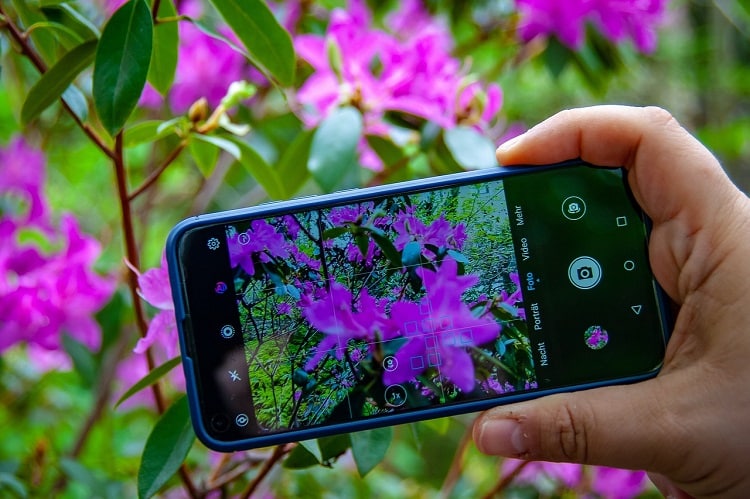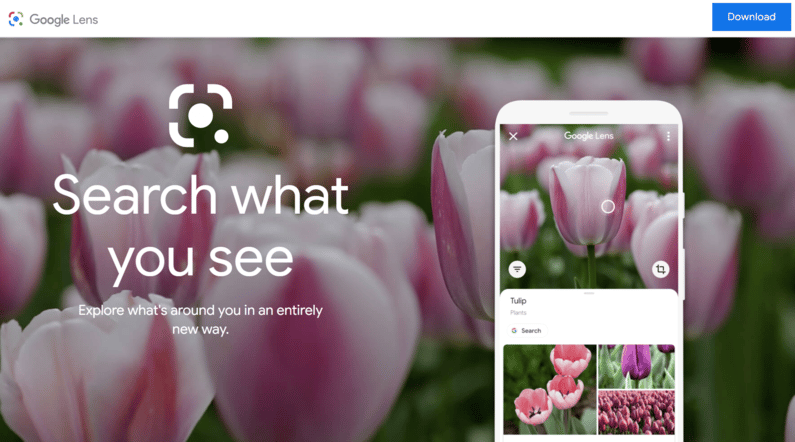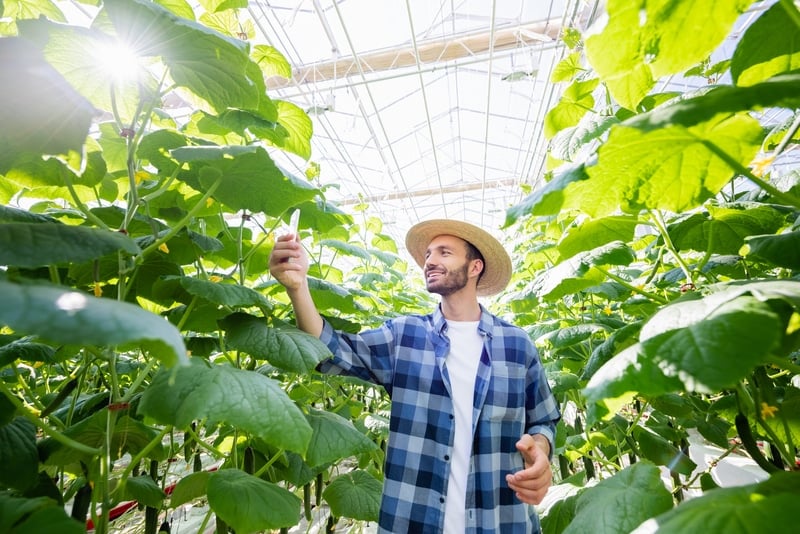Have you ever walked through a park and realized you have no idea what any of the surrounding trees and shrubs are? Have you found a tantalizing but mysterious plant and wanted to know what it is? Or do your friends drop off mystery plants on your doorstep, expecting you to know exactly how to take care of it?
This is where plant identification apps come in handy. With just your smartphone and an app, you can learn more about the plants around you and connect deeper with the natural world. You’ll discover those are elms you walk by every day, that mysterious flower is a zinnia, and that newly adopted plant is not in fact as low-maintenance as your friend claimed.
How do Plant Identifying Apps Work?
Plant identifying apps work in similar ways: you snap a photo of the plant (usually focused on leaves or flowers) and upload it to the app. The app uses photo recognition to compare the photo you snapped with its plant database and returns a series of results (usually at least 3). You compare your original plant photo with the results to see which one matches the best.
Some apps also have features that allow you to submit a photo to other people (whether other users or horticulturist specialists) to identify when photo recognition falls short. These usually take a few hours or more.
How Accurate are Plant Identifying Apps?
There’s no one plant identifying app that scores 100% of the time, but unless you’re identifying a potentially poisonous plant that someone just ate, that’s ok. (For poisonous plants, take lots of clear photos of different parts of the plant, use a plant identifying app and give the photos to the ER.) The biggest factors are the photos you submit and the size of the app’s database.
To improve the accuracy, you first need to have a quality photo. To improve accuracy, take a few moments to:
- Get the plant part in focus without bright sunlight obscuring the details. (Depending on your smartphone camera, this can be easier said than done.)
- Focus on leaves or flowers rather than the whole plant, and make sure the whole leaf or flower is in frame.
- Find a prime example of the leaf or flower. A wilted flower or a leaf missing a lobe will skew the results.
- If you can, upload multiple photos of different parts of the plant (leaf, flower, stem, bark) to increase accuracy. (A lot of plants may have similar flowers, but different leaves, and vice versa.)
- Find a prime example of Show the whole leaf, not just part.
And let’s not forget about the camera hardware and camera app themselves. The higher the quality of the hardware, the higher the quality of the photo. Likewise, some camera apps result in higher quality photos than others, or can introduce Moiré patterning that can compromise the accuracy.
Accuracy also depends on how big an app’s database is. While most apps will cover the most common plants, if a plant isn’t in the database, the app can’t identify it. When choosing an app, pick one that focuses on the plants you want to identify. Do you need help with identifying houseplants? Use an app that focuses on cultivated varieties and plant care. Do you need help to identify the plants along hiking trails? Use one that focuses on wild varieties or has access to an extensive database.
And finally, humans are still a big part of the plant identification process. The apps just speed up the process. Instead of searching through tomes of field guides, the app narrows down the possibilities and brings up the plants that best match the inputs you gave it. You still have to figure out which is the best match. (For this reason, apps that only give one result will have lower accuracy.)
To improve the accuracy, learn more about plant morphology, the shape of stems, leaves, buds, flowers, and fruits. Once you know the different parts, you’ll be able to narrow down the listings faster and easier (“That one doesn’t have a serrated edge. No, that one has alternating leaves instead of opposite.”) While this can seem like an onerous task, you can take it one plant at a time, noticing the leaf shape, the leaf arrangements, the stem and bark, and so on, and use those key details to narrow down the search results. Taking a few moments to do this will also help you learn to identify this plant in the future just by seeing it!
Don’t get too caught up in matching shades of colors, as the same species can vary in color tone and screens can distort colors.
5 Best Free Apps to Identify Plants
When choosing a plant identification app, it’s important to not only look at accuracy, but to compare the ease-of-use, ability to submit multiple photos, and the database size.
It also helps to know what you want to use it for and what additional features will be helpful. Are you using it to identify wild plants along a trail? Then you’ll want an extensive database that focuses on uncultivated plants, like PlantNet. Are you trying to figure out what your inherited plants are and how to take care of them? Then focus on an app that brings up plant care information (and if you have children and/or pets, whether it’s toxic), like PictureThis or GardenAnswers. Do you just want something to identify the occasional plant or bird? Then you’ll want something free with multiple uses like Google Lens.
1. PictureThis App (Android/iOS)
PictureThis claims it can identify over 17,000 plants with 98% accuracy and focuses on cultivated plants and plant care. Identifying a plant is pretty easy — just snap a photo of your plant and run it through the scanner. The app will bring up the top possibilities with a ton of photos to compare. (Always check the photos, as some plants are very similar.)
Once identified, each plant’s guide is extensive, including your basic plant care information (how much sun, water, fertilizer a plant needs), whether it’s pet safe (although not available for all plants), and even some folklore and symbolism info. The amount of information can be really useful for learning about plants, or it can be overwhelming, depending on what you need.
Once identified, PictureThis also helps you care for your houseplants. When you snap a photo, it will also diagnose problems like Brown Leaf Spot, and share the likely causes and what you can do to nurse your plant back to health. You can create a collection of your own plants to set up a care plan and notifications to water or fertilize your plants.
PictureThis’ free plan has ads and includes a limited number of plant identifications. When opening the app, you’ll need to exit out of the subscriber screen, which can be a bit hard to figure out how to do.
2. Google Lens (Android/iOS/Web)
Identifying plants via Google and Bing used to be a matter of hope and prayer, as trying to describe a plant in words is very difficult. Thus came Google Lens and Microsoft Bing’s Name That Plant. Instead of words, you can search through their large databases with a photo.
Google Lens can also identify animals and birds, find similar products online, and translate text into another language.
Google Lens is not as powerful on the web as it is on Android, and using it on iPhone (via the Google app) needs a really perfect photo for an accurate id. Bing’s Name That Plant is only available via the web. They’re both free to use.
3. PlantNet (Android/iOS/Web)
Like other apps on this list, PlantNet helps you identify over 20,000 species of plants. But it’s also a citizen science project, where scientists from all over the world use your contributions to better understand plant diversity and protect it. As such, its primary focus is on plants found in the wild, rather than cultivated plants, and will even tell you if it’s invasive.
The best part is that PlantNet encourages you to submit more than one photo of a plant and lets you identify what part of the plant you’ve taken a photo of. Photos of leaf shapes, flower shapes, fruit, and bark make plant identification easier and more accurate than one of a whole plant or just one part. Once submitted, other members can confirm or change the identification, making each id more accurate.
You can learn more about different plants through their world flora categories, discovering plants local to your country/continent or from different parts of the world, or through their family and genus lists.
PlantNet is a truly free app, with no paid plans or ads.
4. PlantSnap (Android/iOS)
PlantSnap identifies plants — and with its claim that it can identify 90% of all known species of plants and trees, over 650,000 plants — that is quite the feat. It only uses one photo, but it’s auto detection feature will help you narrow down the photo to the best example of the plant. Once identified, it provides the taxonomy, a complete plant description, and plant care details you need.
You can also look up plants you’re interested in by name, find new plants through their map feature, and create collections of your favorite plants.
The interface is simple and easy to use. They plant a tree for every new download.
The downside is that on the free plan, you only get a limited number of identifications, you only use one photo, you can’t see other people’s snaps on a free plan, and it shows ads.
5. GardenAnswers (Android/iOS)
GardenAnswers’ database includes over 20,000 plants. You take a picture, and it will offer many possible matches arranged by how likely it thinks the match is. If you have trouble finding an exact match, you can pay an additional fee (around $1.99USD) to have a horticulturist take a look.
The app also provides a database to search with answers to 200,000 commonly asked plant questions.
GardenAnswers is less aesthetic than other apps, although it does claim to have a simple interface.
The free version is ad-supported.
Final Thoughts
While there is no perfect plant identifying app, the best apps are ones that are easy to use, allow you to upload multiple photos, and allow you to select the right match (photo recognition only goes so far). Learning more about plant identification and the parts of the plant will help you find the right match. The more plants you identify, the better you become at it!

Jamie is the founder of The Backyard Pros. When he was 15 years old he started working at a garden centre helping people buy plants, gardening products, and lawn care products. He has real estate experience and he is a home owner. Jamie loves backyard projects, refinishing furniture, and enjoys sharing his knowledge online.






